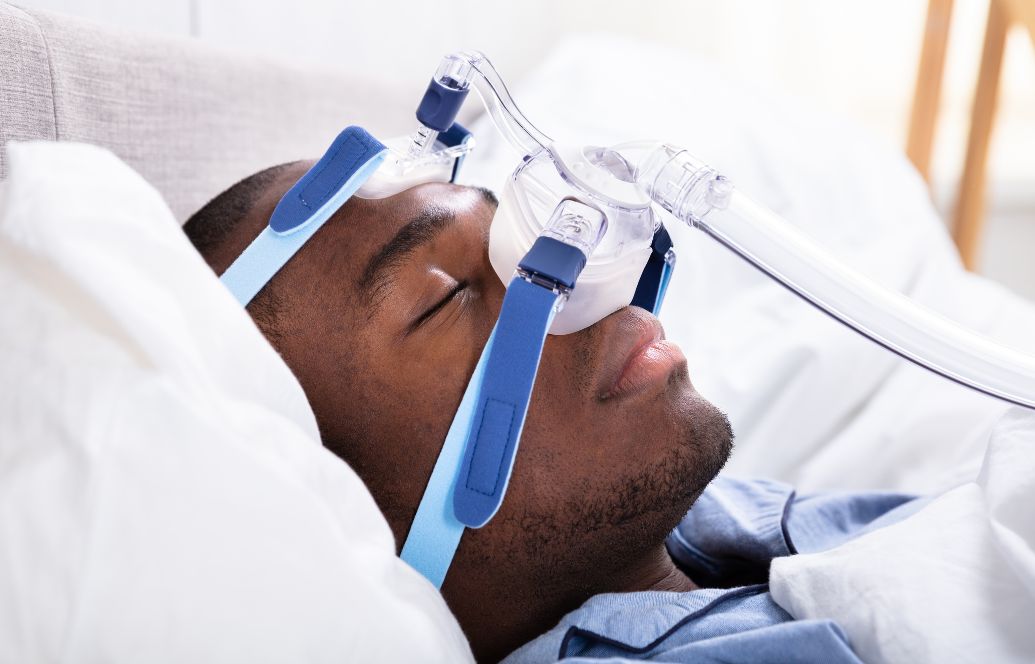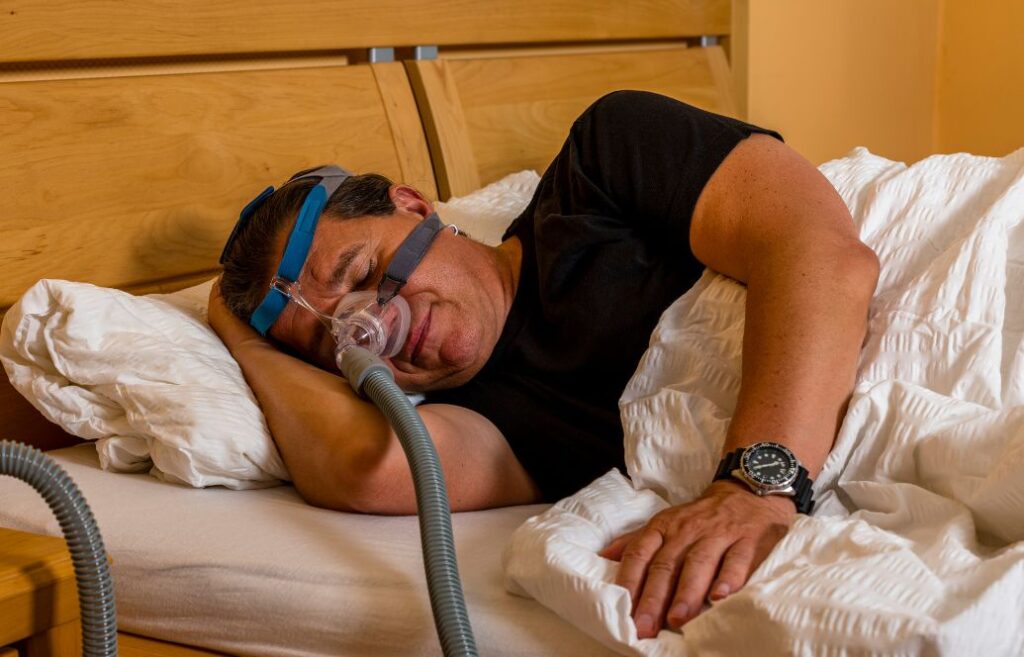For individuals navigating the challenges of sleep apnea, creating a conducive sleep environment is a cornerstone in the journey towards restorative slumber. Beyond therapeutic devices and medical interventions, the atmosphere in which one sleeps plays a pivotal role in mitigating the impact of sleep apnea and enhancing overall sleep quality. Let’s embark on a thoughtful exploration of the elements that contribute to crafting an environment that promotes tranquility and supports those with sleep apnea on their quest for rejuvenating rest.
Lighting serves as a fundamental cue for regulating the body’s internal clock, influencing the sleep-wake cycle. For individuals with sleep apnea, establishing a routine that embraces natural light exposure during the day and limits artificial light exposure in the evening contributes to a balanced circadian rhythm. In the evening hours, consider dimming lights and transitioning to warmer, softer hues, creating a calming ambiance that signals the body to prepare for sleep.
Minimizing external disturbances is crucial for those with sleep apnea, as interruptions can exacerbate fragmented sleep patterns. Investing in blackout curtains or shades can effectively block out unwanted light, especially for individuals dealing with the effects of obstructive sleep apnea (OSA). Noise-canceling devices or the strategic use of white noise machines may prove beneficial in mitigating disruptive sounds that could potentially trigger awakenings during the night.
Choosing the right mattress and pillows is an often underestimated aspect of creating a sleep-conducive environment. For individuals with sleep apnea, selecting a mattress that provides adequate support and aligns the spine correctly is paramount. Memory foam or latex mattresses are often recommended for their contouring properties, adapting to the body’s shape and minimizing pressure points. Pillows that support the natural curvature of the neck and spine can further enhance comfort and reduce the risk of airway obstruction during sleep.

Temperature control plays a significant role in fostering a restful sleep environment. Maintaining a cool room temperature, typically between 60 to 67 degrees Fahrenheit (15 to 20 degrees Celsius), is optimal for most individuals. However, preferences may vary, and finding the temperature that promotes comfort without causing overheating is key. Breathable bedding materials, such as cotton or moisture-wicking fabrics, contribute to temperature regulation, preventing discomfort and night sweats that may disrupt sleep.
In the context of sleep apnea, elevating the upper body can be beneficial in preventing airway collapse. Adjustable bed frames or wedge-shaped pillows can assist in achieving a slightly elevated sleep position, reducing the severity of symptoms. This positioning promotes better airflow and can be particularly advantageous for individuals with positional obstructive sleep apnea.
Screen time management is imperative for a sleep-conducive environment. Exposure to the blue light emitted by electronic devices can interfere with the production of melatonin, a hormone essential for regulating sleep. Establishing a “digital curfew” at least an hour before bedtime and creating a tech-free zone in the bedroom fosters a tranquil atmosphere conducive to winding down.
Creating a sleep-conducive environment is a personalized journey, with each individual’s needs and preferences playing a pivotal role. In the forthcoming segments of our exploration, we will delve deeper into specific strategies and practical tips, empowering individuals with sleep apnea to tailor their surroundings for optimal rest. Join us as we unravel the nuances of crafting tranquility in the pursuit of empowered sleep.
As we navigate the intricacies of crafting a sleep-conducive haven for individuals with sleep apnea, attention to daily routines and mindful choices becomes paramount. The bedroom should ideally be reserved for sleep and intimate activities, reinforcing the association between the space and rest. Let’s explore additional elements that contribute to a tranquil environment tailored to the specific needs of those managing sleep apnea.
Maintaining a clutter-free and organized bedroom promotes a sense of calm and relaxation. A tidy space fosters a peaceful mindset, reducing potential stressors that may hinder the transition into restful sleep. Simple additions, such as soft, soothing colors and decor that promotes serenity, contribute to an atmosphere conducive to unwinding.
The strategic use of aromatherapy can further enhance the sleep environment. Lavender, chamomile, and other calming scents have been shown to promote relaxation and alleviate anxiety, providing a natural aid for individuals with sleep apnea. Essential oil diffusers or sachets can be employed to infuse the bedroom with these soothing fragrances, creating a sensory experience that supports the sleep process.
Incorporating gentle, pre-sleep rituals into the evening routine serves as a powerful signal to the body that it’s time to wind down. Activities such as reading a calming book, taking a warm bath, or practicing gentle stretching or yoga contribute to relaxation and prepare the mind for restful sleep. Consistency in these rituals establishes a predictable pre-sleep routine, signaling the body to transition into a more tranquil state.
The strategic placement of sleep aids within arm’s reach can be advantageous for those managing sleep apnea. This may include items such as a glass of water, throat lozenges, or even a spare CPAP mask for individuals using this therapy. Having these essentials nearby minimizes disruptions during the night, ensuring a smoother journey back to sleep if awakening occurs.
While the importance of sleep position has been highlighted, it’s equally essential to promote comfort through the choice of sleepwear. Loose-fitting, breathable fabrics contribute to a comfortable sleep experience, reducing the likelihood of discomfort that could disrupt sleep. Additionally, maintaining proper hydration throughout the day is crucial, but individuals with sleep apnea should be mindful of limiting fluid intake close to bedtime to minimize the potential for nighttime awakenings.
Addressing any sources of allergens or irritants in the bedroom is pivotal for those with sleep apnea. Clean, dust-free environments contribute to better respiratory health. Regularly washing bedding, vacuuming carpets, and investing in hypoallergenic pillows and mattress covers can mitigate potential triggers that may worsen sleep apnea symptoms.
Lastly, creating a supportive network is integral to the overall well-being of individuals managing sleep apnea. Open communication with sleep partners or family members fosters understanding and shared responsibility. Engaging in relaxation exercises together, such as gentle stretches or deep breathing, can further enhance the pre-sleep environment and contribute to a sense of unity in the pursuit of restful sleep.
In the concluding segments of our exploration, we will delve into specific challenges faced by individuals with sleep apnea, offering tailored solutions and insights to navigate these obstacles. Join us as we continue to unravel the layers of crafting a sleep-conducive sanctuary, empowering individuals to reclaim their nights and awaken revitalized.

